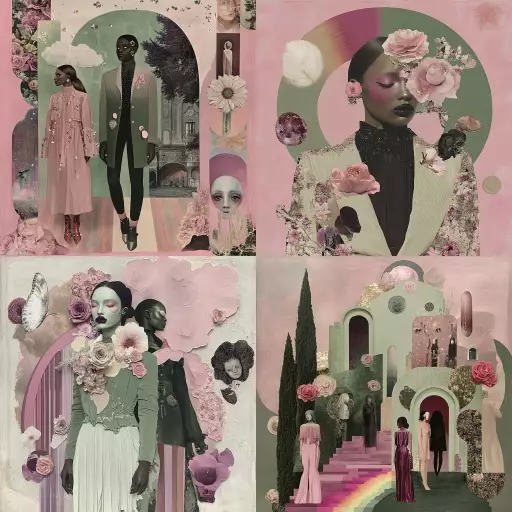Explore the Best AI Image Gallery

Beyond the Brush: AI Image Creation Tools and the Future of Creative Industries
The realm of art and design is undergoing a seismic shift, fueled by the rapid advancements in artificial intelligence. AI image creation tools, capable of generating stunning visuals from simple text prompts, are no longer science fiction; they are a tangible reality reshaping the creative landscape.
A Canvas Painted by Algorithms
These powerful algorithms, trained on vast datasets of images and text, learn to understand the nuances of visual composition, style, and aesthetics. With each iteration, they refine their ability to translate human imagination into digital masterpieces. From photorealistic landscapes to abstract art pieces, AI tools are pushing the boundaries of whats possible, offering a new dimension to creative expression.
Impact Across Industries
The implications of AI image creation extend far beyond the traditional art world.
- Marketing and Advertising: Brands can leverage these tools to create compelling visuals for campaigns, product mockups, and social media content, streamlining the creative process and reducing costs.
- Publishing and Media: Imagine generating captivating illustrations for books, magazines, and news articles instantly. AI can personalize content, enhance storytelling, and bring visual narratives to life.
- Entertainment and Gaming: From designing characters and environments to creating stunning special effects, AI can revolutionize the entertainment industry, empowering developers to produce immersive experiences.
- Architecture and Design: Architects can utilize AI to visualize their designs in 3D, experiment with different layouts, and refine their concepts before construction begins.
The Ethical Frontier
While the potential benefits are undeniable, AI image creation tools raise important ethical considerations.
- Copyright and Ownership: Who owns the rights to AI-generated artwork? Establishing clear guidelines for copyright protection is crucial in this evolving landscape.
- Bias and Representation: AI algorithms learn from existing data, which can perpetuate biases and stereotypes. Its essential to ensure that AI-generated content reflects diversity and inclusivity.
- Job Displacement: As AI automates certain creative tasks, concerns about job losses in the creative industries are valid. Upskilling and retraining programs will be vital for adapting to this changing landscape.
The Future of Creativity
AI image creation tools are not meant to replace human creativity; rather, they are powerful instruments that can augment and enhance our artistic abilities. The future lies in a collaborative approach, where humans and AI work together to push the boundaries of imagination and innovation.
Emerging trends include:
- Personalized Creative Experiences: Imagine tailoring artworks based on individual preferences or generating unique designs for specific occasions.
- Interactive and Immersive Art: AI can create art that responds to user input, blurring the lines between viewer and participant in a dynamic artistic experience.
- Accessibility in Creative Expression: AI tools can empower individuals with disabilities to express themselves creatively through new mediums and overcome traditional barriers.
Embracing the Possibilities
The emergence of AI image creation tools presents both challenges and opportunities. By embracing ethical practices, fostering collaboration, and nurturing our human ingenuity, we can navigate this transformative era and unlock a future where creativity knows no bounds.